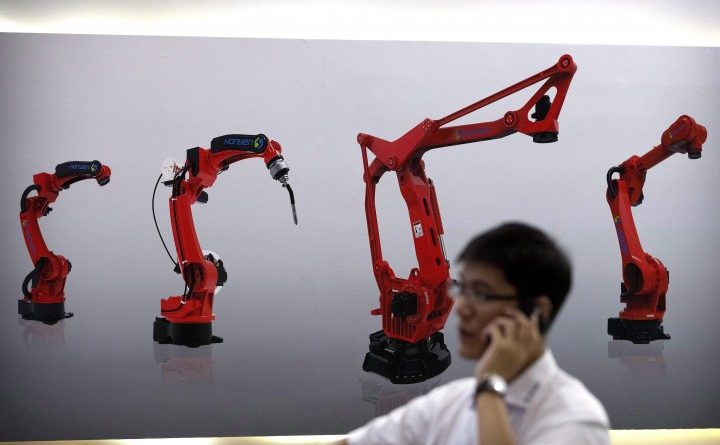‘Doomsday’ scenario of mass layoffs due to AI unlikely, federal documents say
OTTAWA — Newly released documents show that top government officials believe there is no imminent threat that artificial intelligence and robots will displace large segments of the Canadian workforce.
In work done last year, federal experts found the likelihood of a “doomsday” scenario where automation eliminates half of Canadian jobs to be “overstated.”
But officials warned there were early indications of challenges in parts of the economy that the government should do something about, such as the way online streaming services are reshaping music, television and movie production.
In a separate briefing, officials were told ahead of summer that 11 per cent of jobs in Canada could be automated over the next 15 to 20 years, and a further 29 per cent are “likely to change significantly.”
The Canadian Press obtained a copy of the briefing summary, as well as May and June drafts of the report, through the Access to Information Act.
The report was to be used as the foundation for advice to the victor of the fall federal election on how to help workers at the dawn of a new decade.
The work was part of a series of exercises officials have run to see how well “social safety net” programs respond to the most dire of potential outcomes caused by technological shifts in the workforce.
It’s unclear how well federal programs fared. Those details, like many others in the documents, have been blacked out or not released because they are considered advice for government.
Federal officials have forecast where the impacts of automation are likely to be felt most, such as rural towns reliant on manufacturing, according to documents previously obtained by The Canadian Press in March. Those documents, alluded to in the June report, also listed the towns most and least likely to feel the impacts in each province.
But exactly where effects are felt and how fast they arrive remains a guessing game.
For instance, the federal documents say some tasks, such as copy editing and data entry, could be outsourced overseas to low-cost workers through online platforms. Three-dimensional printing, on the other hand, could bring back manufacturing jobs.
Officials also wrote that other trends not measured in the report will shape the future of work, such as the transition to a low-carbon economy and increasing numbers of LGBTQ2 workers.
Some policy responses will come into effect with the turn of the calendar to 2020, including the launch of a $250-a-year benefit for workers to be put towards training, and a matching leave underwritten by employment insurance. That work will be overseen by Employment Minister Carla Qualtrough, who has been given responsibility for skills training and the EI system.
Officials advising Qualtrough have heard that many adults lack “soft skills and basic digital skills” needed for success in the future, according to a summary of a May presentation to deputy ministers — the top federal bureaucrats — by an official from the Organization for Economic Co-operation and Development.
A recent report by the Brookfield Institute came to a similar conclusion, and recommended governments create “a wide variety of accessible programming designed to teach Canadians general workforce digital skills … along with general soft skills.”
Meanwhile, Labour Minister Filomena Tassi is tasked with updating the federal labour code, including increasing the federal minimum wage to at least $15 an hour, and additional protections for “platform workers,” such as Uber drivers.
Several of the details in Tassi’s mandate letter reflect recommendations of a blue-ribbon panel of experts. The panel also recommended the government look at models of collective representation for non-unionized workers, and rules to compensate workers who stay connected by email to the office after work hours.
Sunil Johal, chair of the panel, said a key message from the report is that labour rules and regulations need to be frequently reviewed as more shifts are felt in the workforce.
He said there is also a need to make regulations more nimble. That might mean creating what Johal described as “outcomes-based regulations” to address shifts in the labour market to spell out what the government expects but allow businesses to determine the means to that end.
“If we take as a given that the world of work and the labour market is going to be shifting and adapting more quickly than ever as we move forward, then we absolutely need to move to regulatory legislative approaches that move just as quickly,” Johal said.
“When there’s a decades-long lag, that’s where you’re going to have huge issues that … put labour standards at risk of falling just so far out of step that it’s completely unacceptable.”
In a statement accompanying the release of the panel’s report in December, Tassi said the government would “consider the excellent work done by the panel” in making changes to federal labour rules.
By: Jordan Press, The Canadian Press
© The Canadian Press, 2019. All rights reserved. This material may not be published, broadcast, rewritten or redistributed.




